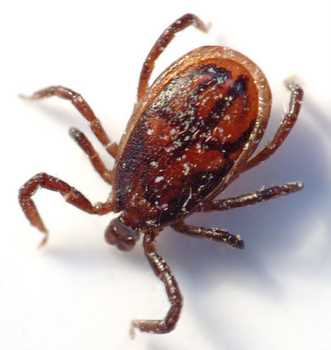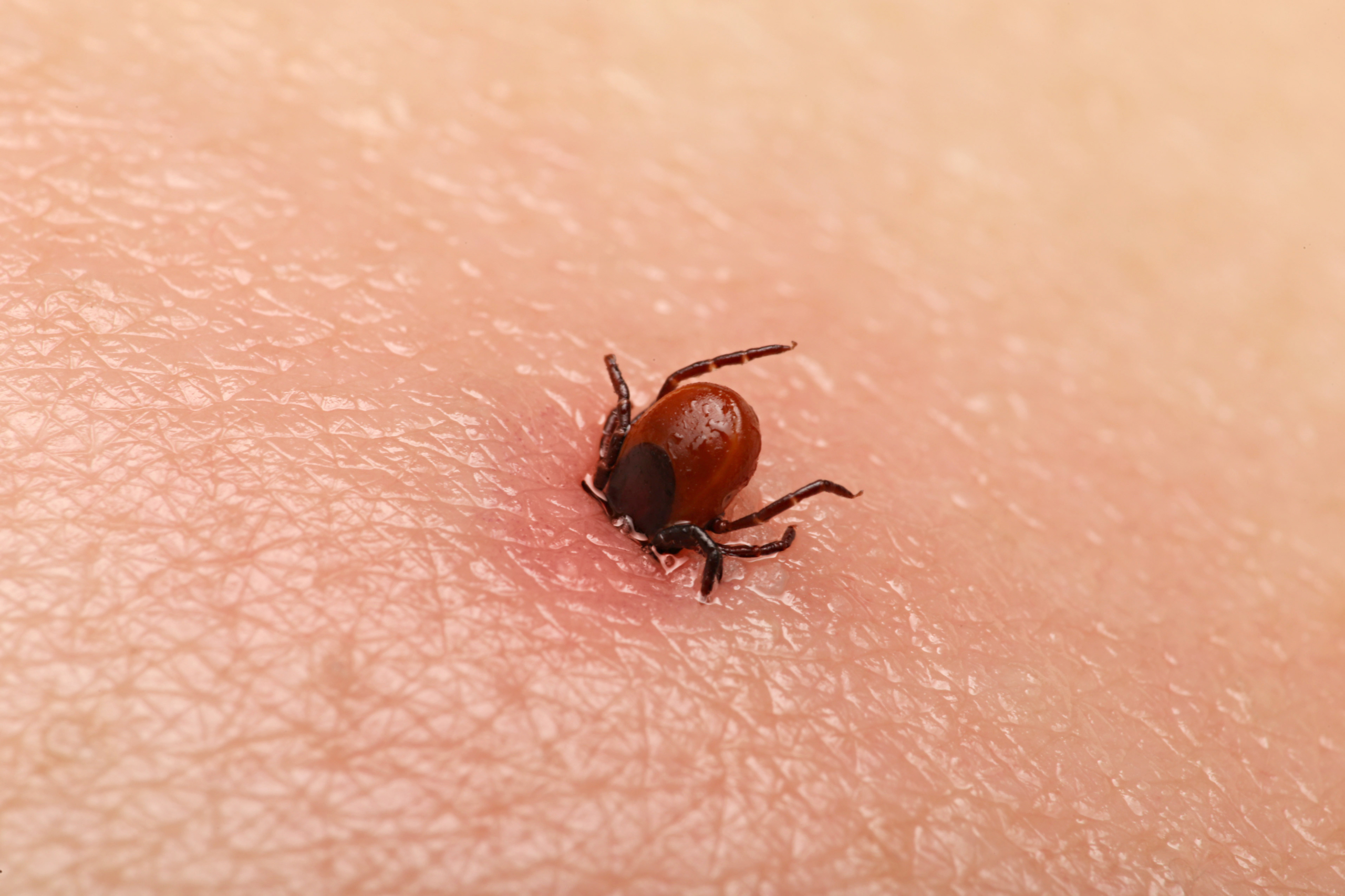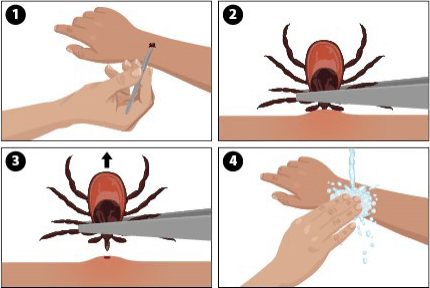
Ticks are not insects, but tiny blood sucking parasites which live in woodland and grassy areas, closely related to spiders.
They feed on the blood of birds and mammals, including humans.
They are often found in tall grass, where they will rest at the tip of a blade so as to attach themselves to a passing animal or human.
The tick will usually drop off the animal when full, but this may take several days. When feeding, ticks make a small hole in the dog’s skin, attach themselves, and insert piercing mouthparts that remove blood.
The presence of ticks is annoying to dogs and can lead to serious illnesses if not removed early.
Regular examination and grooming of pets (especially dogs) and frequent cleaning of their bedding is strongly recommended. Infested pet bedding should be carefully washed or disposed of.
The area around the pet bed should be carefully and thoroughly treated if the infestation is to be eliminated.
Ticks should be removed carefully and slowly. If the attached tick is broken, the mouthparts left in the skin may transmit disease or cause a secondary infection.
They should be grasped with tweezers at the point where their mouthparts enter the skin and pulled straight out with firm pressure.
You can buy special tick tweezers from most chemists.
A small amount of flesh should be seen attached to the mouthparts after the tick is removed. Do not squeeze the body of the tick or attempt to remove it through burning or chemicals.
If a tick is removed from a human, it is worth saving it in a sealed container in case they develop symptoms later.

Keep an eye on anywhere you’ve been bitten by a tick. If you develop a rash or experience flu-like symptoms after being bitten, you should probably see a doctor. as you could have Lyme disease , a bacterial infection spread to humans by infected ticks..
Only a very small proportion of ticks carry the bacteria that can cause Lyme disease so being bitten doesn’t mean you’ll be infected.
Many people with early symptoms of Lyme disease develop a circular rash around the tick bite.
The earlier Lyme disease is diagnosed, the easier it is to treat.
You can avoid most tick bites on your dog by using a preventive product such as FrontLine.


 When the winter ended I decided I liked the rustic look of the log basket containing a few logs and so I kept it in my living space.
When the winter ended I decided I liked the rustic look of the log basket containing a few logs and so I kept it in my living space.
Frontline is overpriced, overadvertised, and messy…there are better and cheaper alternatives., I use Seresto collar. ..no adverse reactions. I tried Scalibor collar but local ticks seemed to ignore it.